“We’re aiming to gain efficiency of production in the greenhouse, and we’re looking to have better yields and quality of production, all while lowering the consumption of energy,” says Louis Golaz with RED Horticulture. "That makes us much more than just a lighting manufacturer." Together with new sales manager Jose Carretero, he explains why higher efficiency in luminaires is only part of the answer. “More than the most efficient lights, you also need high efficiency in your lighting strategy.”
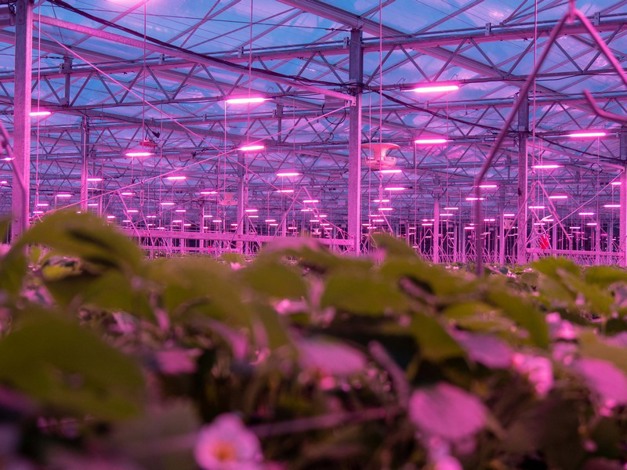
Highest efficacy
The French company RED Horticulture is based in Lyon. The company raised €2.5 million last year, which will enable them to expand their reach among high-tech greenhouse growers around Europe. Their story is different, as Louis believes the search for the highest efficacy in LED lighting might not be the true solution for growers. “You’re looking for higher efficacies, but sometimes the lighting strategies you use are not best for the plants. That’s why with RED, we’re investing a lot in photobiology. We want to understand the interactions of light with all living things in the greenhouse: not just the plants, but also pathogens, insects, beneficials, and the workforce. We want to be able to give answers on how light strategies interact with the whole environment.” That is why RED Horticulture combines LED lighting, artificial intelligence, and software to control lighting strategies in real-time and optimize plant growth.
Jose, who recently joined the company to set up a business in the Netherlands, explains how micromoles can seemingly make it easy for growers to compare LED products. “It brings insights to how much energy you put in and how much light is coming out, but you’re not looking at the performance of the protagonist of this story: is the plant performing well with it?. Besides, each crop has different needs depending on the climate, growing objective, and stage of development.”
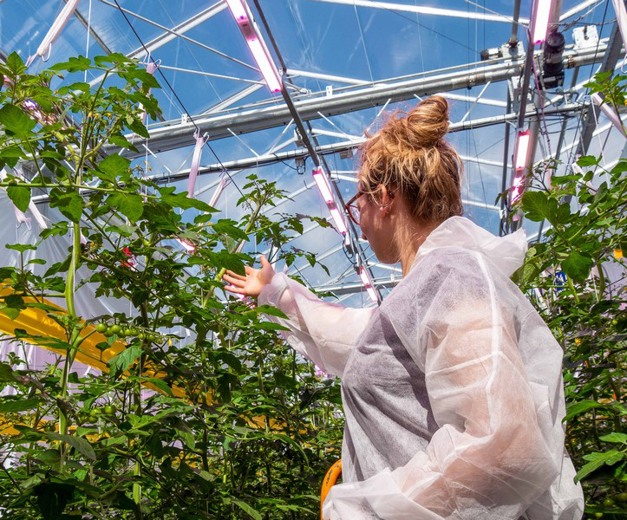
Counterintuitive
The RED team has learned that greenhouse lighting can be counterintuitive, something that becomes clear when focusing on the performance of the plants and tracking the results. “Up until now, we often apply the same spectrum to different varieties and different crops in different climates, but that’s a very narrow view, whereas the world is increasingly becoming a precision growing world. That’s why, together with the grower and the system we have in place, which is built with Artificial Intelligence, we try to find the best way to apply light and get the best performance from the plant.” To clarify why this is not always the same, he explains how driving to Amsterdam can be most efficient via a certain highway on day A, but much faster via a different route on day B. “The quickest road might not be the shortest one, which seems counterintuitive. That’s why you use a route optimizer like Google Maps, based on AI.” He adds that if your goal is to use the shortest route, your output will be different. “That’s why you need to have your cultivation goals in mind.”
This is exactly what their trials with Delphy in the Netherlands also show. In a demo with cherry tomato variety Piccolo, the team with RED Horticulture was able to produce 13% more cherry tomatoes, with a 8% higher brix value during the winter months. “We used the same amount of light, but with a more optimized spectrum than the 95% red 5% blue spectrum.”
In strawberries, too, the use of light strategies turned out to be more important than solely focusing on the highest output for the lowest energy use. “Not using the most light, but using the right light can help growers to gain 35% additional production in only three weeks. The difference is huge, and, especially in a winter cycle of strawberry growing, being in production at the right time is of vital importance: you can make up to 40% of your turnover if you do it right and use your lights to start harvesting earlier.” The right lighting strategy enables growers to reduce the time between sowing and the first harvest. “In your first production peak, you’re the only one on the market, enabling you to produce before anybody else does.”
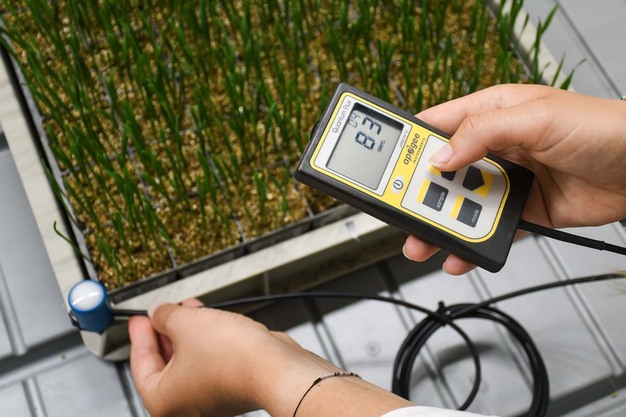
Focus on efficiency can set a grower back in growing
It is an example of how the focus on efficiency can set a grower back in growing. “That’s one of the unique points of our system,” Jose says. “How much should we use in order to win how much? The idea is to explore all parts of light: the higher yield, precocity, and architecture of the plants: anything that can bring added value for the grower.”
All the information is comprised in Solstice, the tool they developed for the grower to understand the lighting aspect of their business, enabling them to gain insights on and optimize its lighting strategy. Indeed, the team prefers to talk of a lighting strategy over a lighting recipe. “Strategies are based upon the requirements of a grower: What do you consume, how many plants do you have in the greenhouse, and what do you want to optimize? If the electricity prices go up, the goal might shift from producing the most cucombers possible to producing optimized energy usage. All our tools are developed to enable these adjustments in mind.”
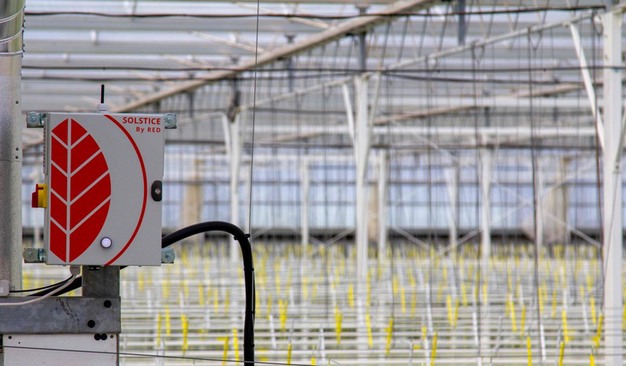
Lighting hardware
As a second part of the RED Horticulture offerings, there is the hardware: TAURUS luminaire is fully controllable. “Controllable also means scalable”, Jose says. “When you buy a new luminaire or installation, you buy it for the next couple of years, but photobiology is a new science, it advances every day. We couldn’t live with the fact that we sold our customers something that wouldn’t evolve. You invest for ten years, so you must invest in something that enables you to gain added value for the next 10 years.”
It also brings additional flexibility to a grower. “If you change the variety that you’re producing, or the market changes, you need a luminaire that can change as well.”
So, let’s circle back to the price part: The price of the solution depends on the amount of light the crop will require, and therefore the number of fixtures recommended. “If you want to bring a solution to growers that they can actually invest in and can grow with for the next ten years, you need to have a price point in mind that enables the growers to be competitive as well. At RED, we like to talk in number of years to get a return on investment. For example, for strawberries, we suggest a return on investment in 2.5/3 seasons.” Louis simply says. “A solution they cannot afford is not sustainable in any way.”
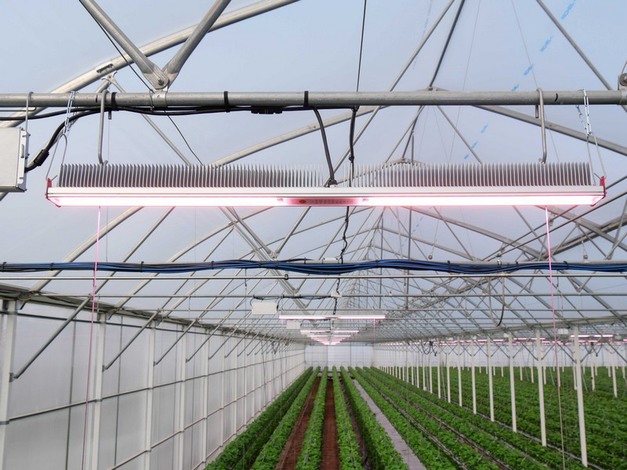
Demonstrations
RED Horticulture has been working on high wire crops, soft fruits, cannabis, micro algae, and seed breeding companies. “Over the last years, we’ve built up extensive knowledge on how plants react to light. In France, we’re working with the biggest innovators in the industry. Our lights are installed in semi-closed greenhouses, by growers that want to make a change to the industry. Now we’re sharing this knowledge with the Dutch sector,” Louis says. This year, four demonstrations are realized: one in tomatoes, one in cucumbers (the Autonomous Growing), and one in strawberries. The team is also working with Verify (World Horti Center) realizing a demo on chrysanthemum. “We’ll be welcoming any grower that wants to see and discuss how lighting can affect their crop production. We’ve seen in the Piccolo trial that the figures can help the industry move forward, not just by optimizing the lighting, but by optimizing growing as a whole.”
For more information:
RED solutions
Louis Golaz
louis.golaz@horticulture.red www.horticulture.red
